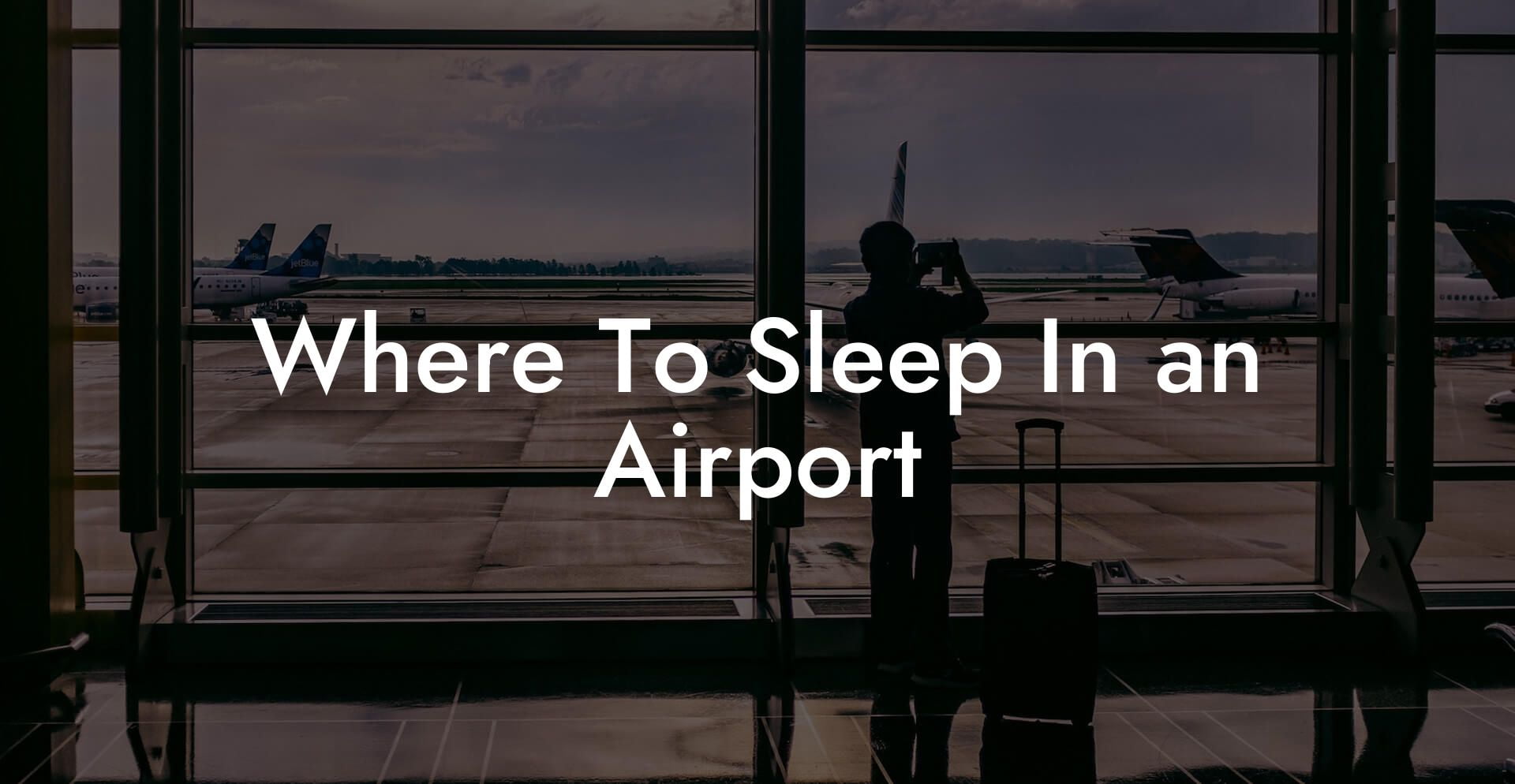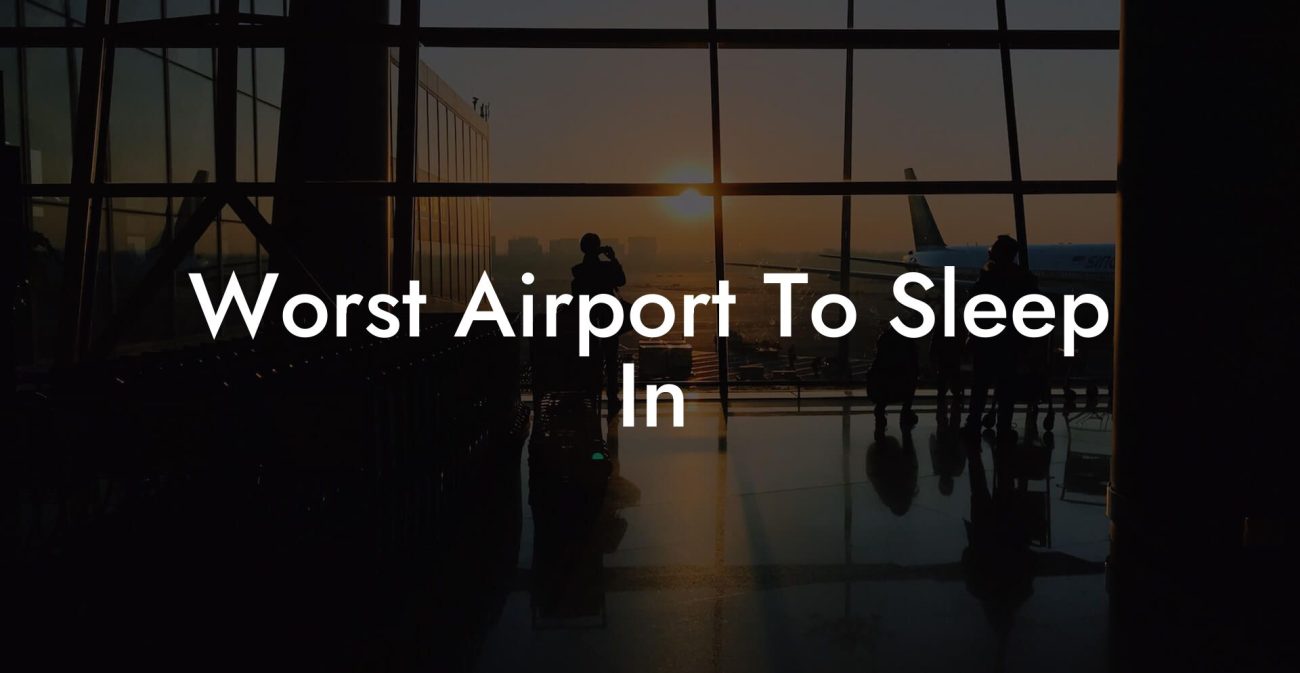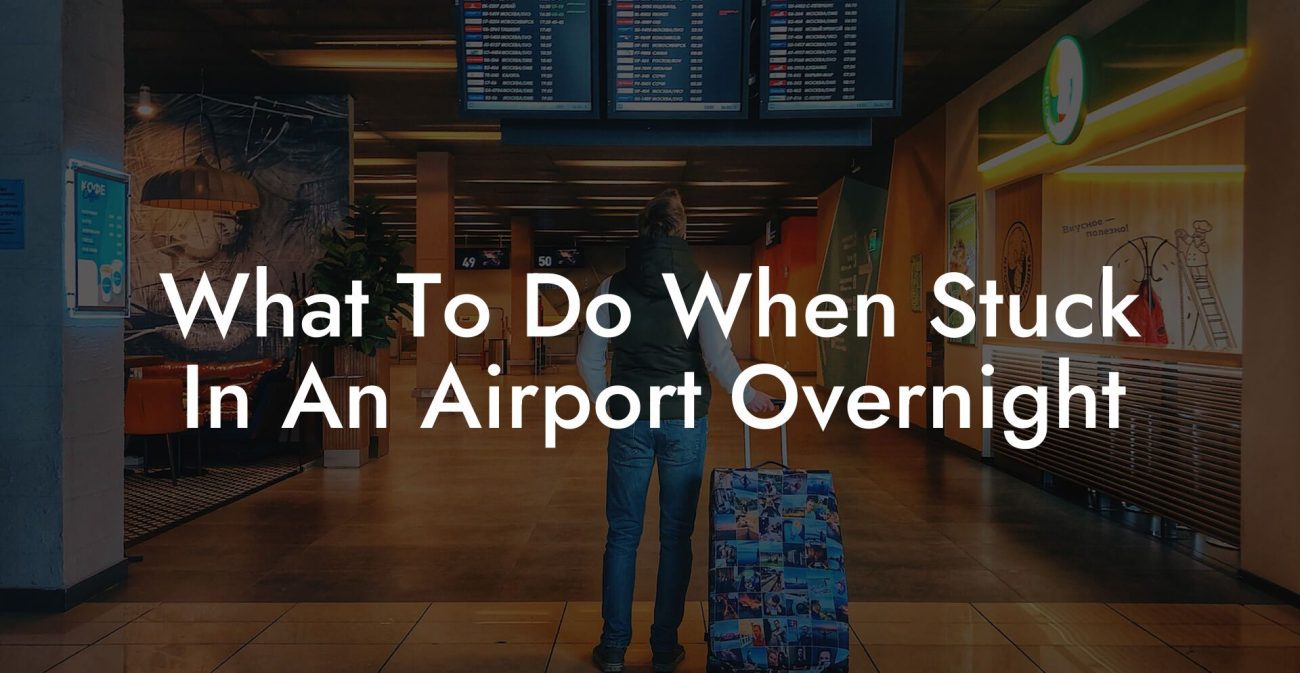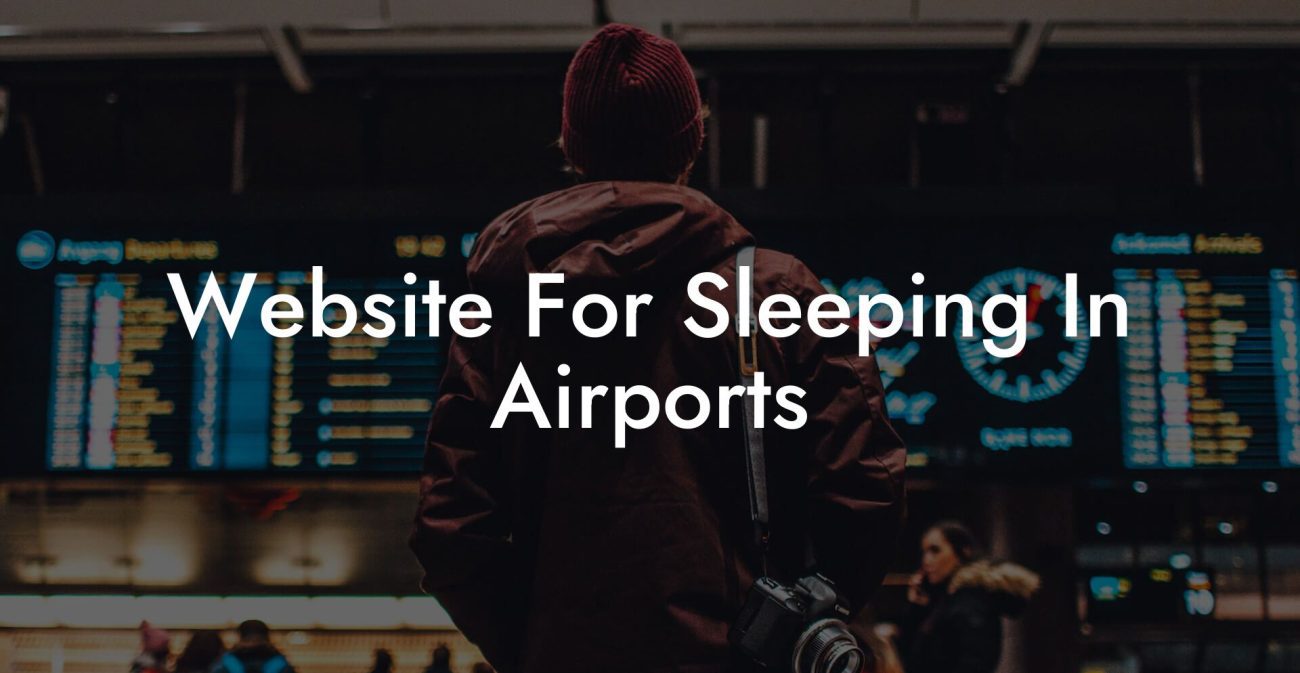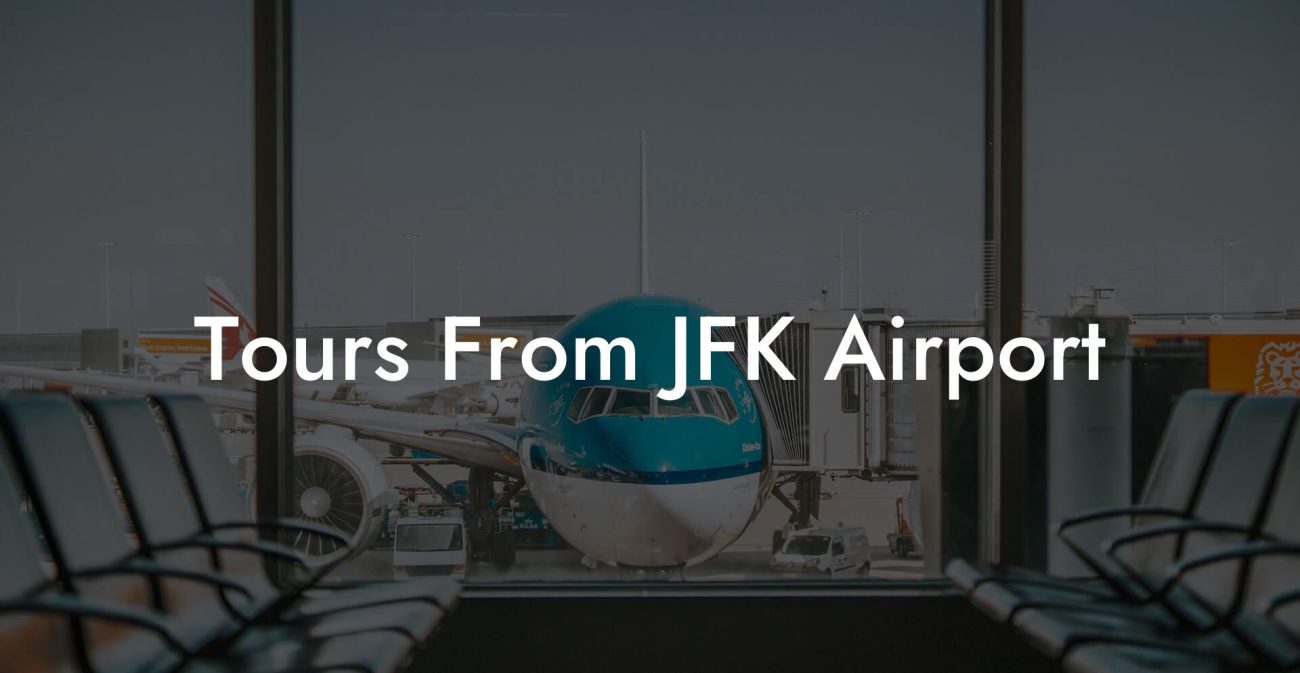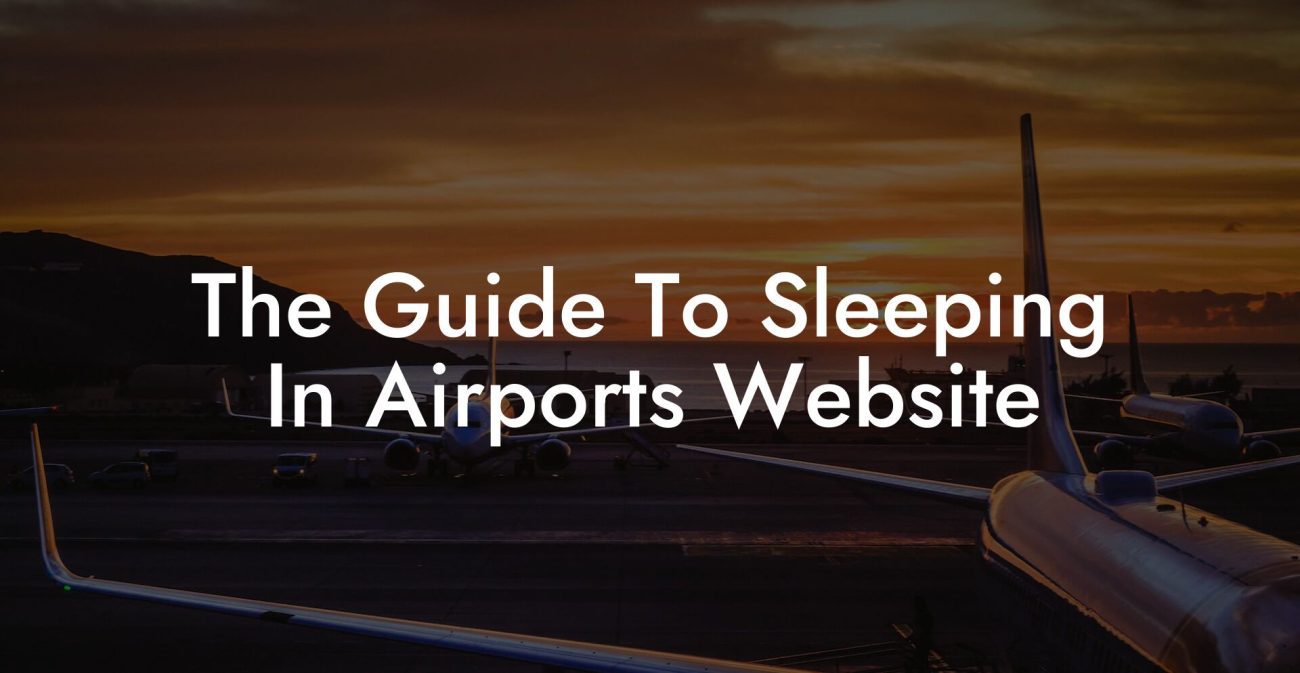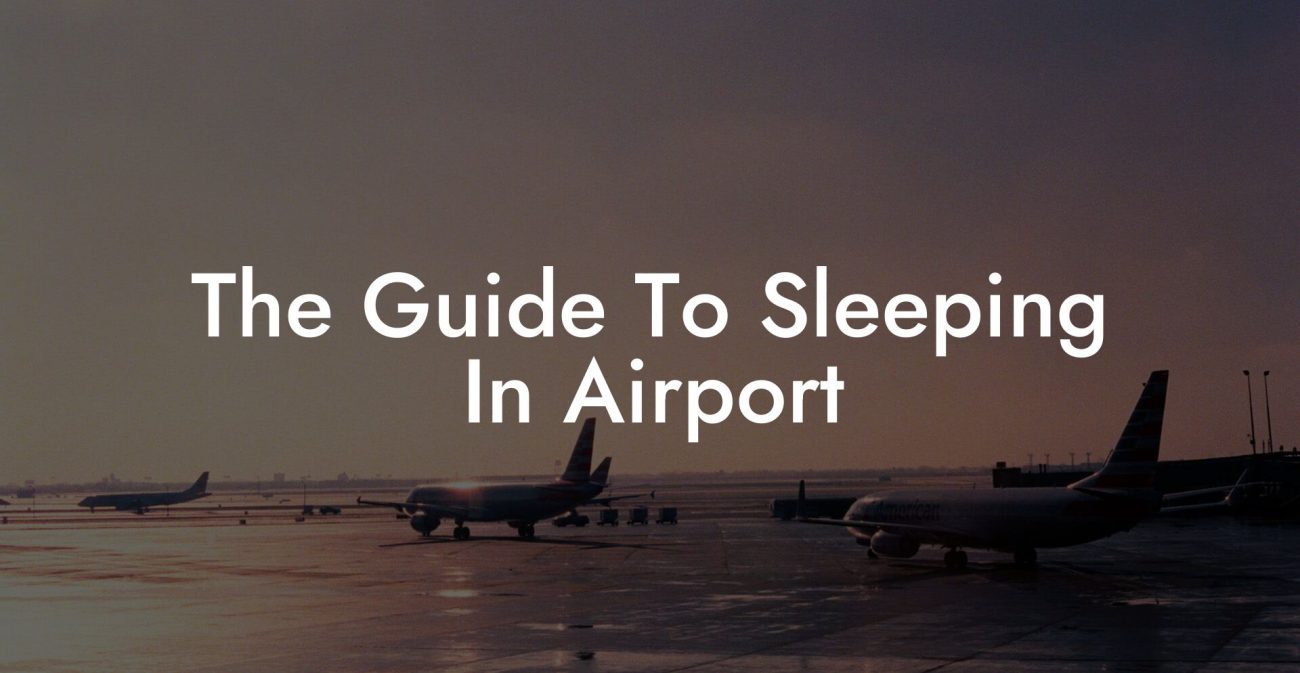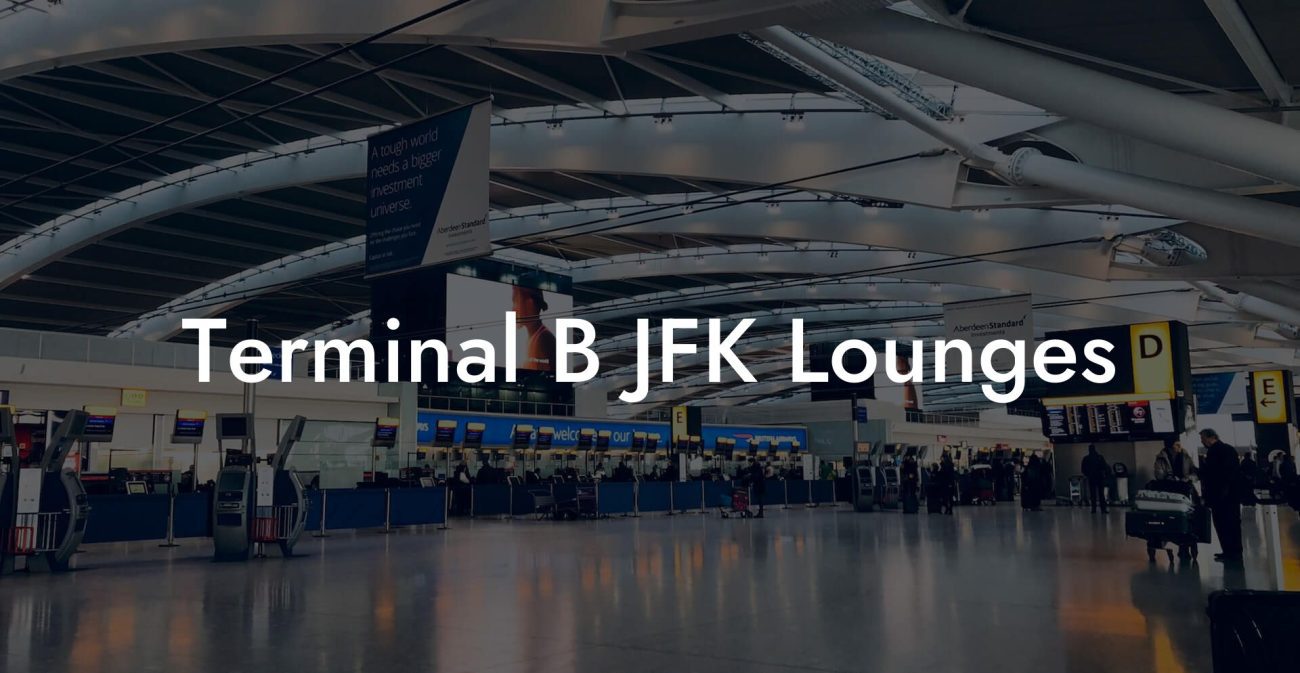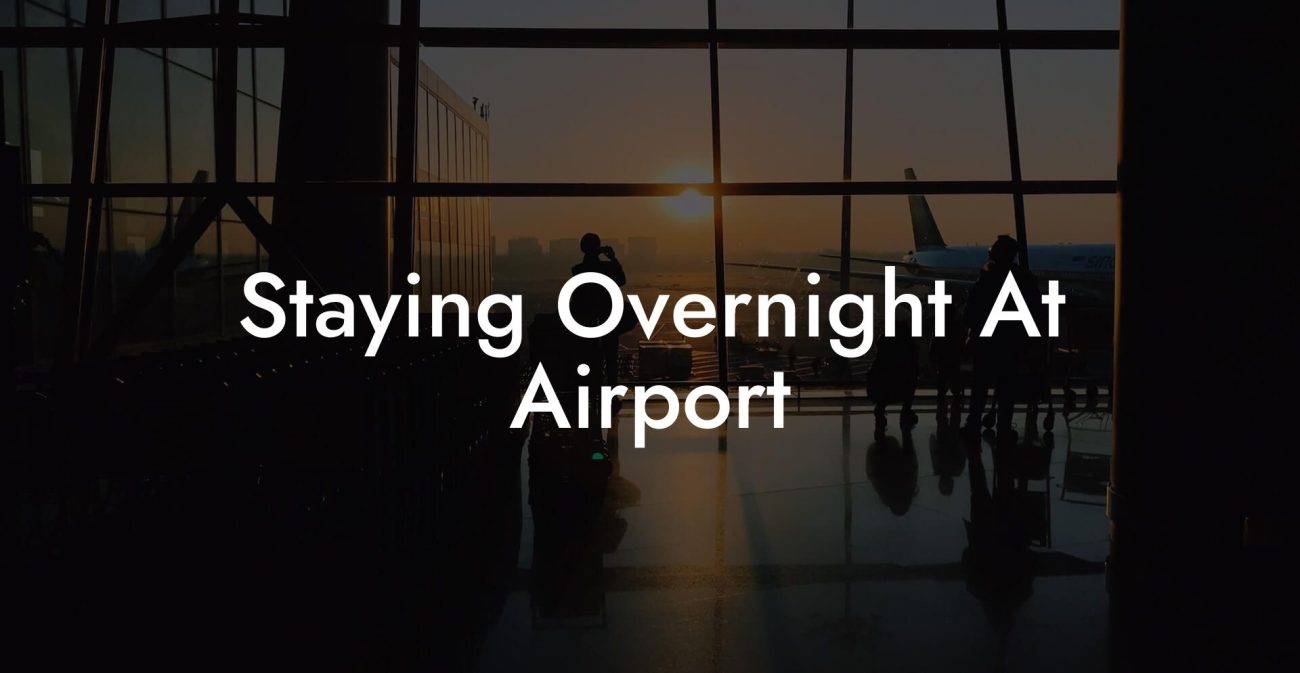Crashing at the terminal may not be the dream vacation you envisioned, but when flights are delayed or budgets are tight, finding a cozy spot amidst the hustle and bustle of an airport can become a surprisingly refreshing adventure. Whether you’re a seasoned traveler with a collection of airport nap stories or a first-timer scoping out the best hidden sleeping pods, this guide is your ultimate passport to mastering the art of airport sleeping. Get ready to explore ingenious tips, honest reviews, and unconventional ideas that blend humor, tech-savvy insights, and downright practicality to help you catch some much-needed Z’s on the go.
Quick Links to Useful Sections
- Why Embrace the Airport sleep Adventure?
- Navigating the Airport Sleep Landscape: Options and Opportunities
- Free Sleep Spots: Hidden Corners and Under-the-Radar Nooks
- Sleep Pods: The Ultimate in Airport Comfort
- Airport Lounges: Combining Comfort with Perks
- How to Plan for an Airport Nap: Preparation and Practicality
- Timing Is Everything
- Set Your Alarm and Pack Smart
- Privacy and Security: Staying Safe While You Snooze
- Top Airports with Stellar Sleep Facilities and Sleeping Pods
- Changi Airport, Singapore
- Incheon International Airport, Seoul
- Hamad International Airport, Doha
- LAX and San Francisco International, USA
- Practical Tips and Tricks for Maximizing Your Airport Sleep Experience
- Embrace the Power of Pre-Sleep Rituals
- Utilize Sleep Apps and Digital Tools
- Optimize Your Seating Arrangement
- Stay Flexible and Adapt
- Keep Your Energy Manageable
- What to Expect from Airport Sleeping Pods: Features and Functionality
- Design and Comfort
- Privacy and Security
- Integrated Technology
- Hygiene and Maintenance
- Finding the Best Airport Sleep Spots: Apps, Maps, and Insider Tips
- Must-Have Apps for Travel and Airport Comfort
- Community Insights and Forum Advice
- Mapping Out Your Terminal
- Hotel Alternative? Why Airport Sleep Is the New Luxury of Flexibility
- Efficiency and Time-Saving Benefits
- Cost-Effective Comfort
- Enhanced Flexibility
- Resources and Community Support: Your Next Steps
- In-Depth Look: How Airport Sleep Strategies Evolve with Changing Travel Trends
- Common Challenges and How to Overcome Them
- Noise and Distractions
- Limited Space
- Security and Privacy Concerns
- Jet Lag and Sleep Inertia
- FAQs: Your Airport Sleep Questions Answered
- Your Journey to Becoming an Airport Sleep Aficionado
- Final Reflections on Mastering the Art of Airport Sleep
Why Embrace the Airport sleep Adventure?
It isn’t every day that the airport transforms into an impromptu sleep haven, but modern travel has a way of turning inconvenience into opportunity. With the rise of budget airlines, unpredictable schedules, and the ever-increasing desire for flexibility, sleep-friendly airports and their innovative sleeping pods have become a staple in the travel landscape. For Gen-Z and millennials, who prize both efficiency and a little bit of quirkiness, airport naps could mean the difference between a stressful layover and a well-timed power recharge.
Far from the clichéd image of a grubby bench or a questionable corner in a dark terminal, today’s airport sleep solutions range from high-tech sleeping pods to exclusive airport lounges offering peaceful corners and even luxury nap zones. This guide dives deep into all the facets of airport sleep so you can decide whether to splurge on a premium pod or score the best free napping spots.
With engaging, down-to-earth tips and a healthy dose of humor, we’re here to prove that a good airport sleep scheme isn’t just about avoiding exhaustion—it’s about taking control of your travel itinerary, reclaiming your energy, and maybe even discovering a new passion for unconventional comfort zones.
Navigating the Airport Sleep Landscape: Options and Opportunities
Let’s face it—airports are not typically designed for leisurely sleep sessions. However, the rapid evolution of airport design and travel technology has paved the way for creative environments that let you crash in style. In this section, we break down the available airport sleep options, from free public spaces to high-tech sleeping pods that cost more than a latte.
Free Sleep Spots: Hidden Corners and Under-the-Radar Nooks
For those with limited budgets or a knack for finding hidden gems, many airports house free sleeping spots that are perfect for a quick snooze. Look for quiet areas tucked away behind heavy-duty scanners, underutilized seating clusters, or lounges that slip into “sleep-friendly” mode during off-peak hours. Keep an eye out for:
- Unoccupied waiting areas: Some terminals have rows of comfortable chairs that offer back support and a forgiving recline.
- Quiet zones: Travel hubs increasingly designate “quiet zones” specifically for relaxation.
- Hidden corners: Early birds or those with insider tips can uncover lesser-known pockets behind check-in counters or near boarding gates.
These spots can be the hidden treasures of any airport, but always scout your surroundings to ensure you’re not in a high-traffic area or too close to security checkpoints.
Sleep Pods: The Ultimate in Airport Comfort
Imagine stepping into a futuristic booth that envelopes you in coziness while you’re waiting for your next flight. airport sleeping pods have become the epitome of travel luxury, offering privacy, adjustable lighting, charging ports, and even built-in soundproofing. They are designed to provide an oasis of sleep, away from the constant buzz of terminal announcements and rolling suitcases.
Key features of airport sleeping pods often include:
- Ergonomic design: Tailored for recline and optimal posture.
- Sound insulation: To muffle the general terminal noise.
- High-tech amenities: Integrated charging stations, mood lighting, and sometimes even Wi-Fi.
- Privacy: Lockable doors and partitioned sections provide a sense of security and seclusion.
Though these pods come at a premium, their benefits often outweigh the cost—especially for travelers in need of uninterrupted rest to refine their in-flight selfie game.
Airport Lounges: Combining Comfort with Perks
While not free in all cases, airport lounges are more accessible than you might think. Offered by airlines and independent companies alike, these lounges deliver an array of amenities including comfortable seating, complimentary food and beverages, free Wi-Fi, and sometimes even designated nap rooms. For loyalty card holders or premium ticket passengers, lounges can be an excellent choice for a little sleep and rejuvenation.
Even if you’re not a frequent flyer, consider purchasing a day pass if the lounge offers a serene environment far removed from the typical terminal chaos. This experience can elevate your travel day from hectic to unexpectedly luxurious.
How to Plan for an Airport Nap: Preparation and Practicality
The success of your airport nap doesn’t solely rely on the available sleeping spots—it’s also about your pre-flight planning and mindset. With a bit of strategy and a flexible attitude, you can turn wait times into valuable rest periods. Here’s how to plan like a pro:
Timing Is Everything
Before you even set foot in the airport, check your flight schedule, terminal maps, and sleeping amenity listings. Many airports update their websites and mobile apps with details about quiet zones, lounge hours, and the availability of sleep pods. Timing your arrival during off-peak hours (usually early morning or late at night) can significantly enhance your nap quality.
Use flight-tracking apps and alerts to stay abreast of delays or gate changes that might affect your sleeping plans. A little bit of luck and timing can make all the difference between a tranquil nap and a frantic dash to catch a boarding call.
Set Your Alarm and Pack Smart
The beauty of a sleep session at the airport lies in its brief, restorative nature. Set multiple alarms on your phone or portable alarm clock to ensure you wake up in time for boarding. Consider investing in noise-cancelling headphones or earplugs to drown out ambient noise, and carry a travel blanket or neck pillow to add a layer of comfort to any seating arrangement.
Packing a small travel kit dedicated to your airport sleep routine—not to mention a charging cable, moisturizer, and maybe a favorite book or playlist—can transform a dreaded layover into a rejuvenating experience.
Privacy and Security: Staying Safe While You Snooze
Rest assured, sleeping at an airport doesn’t mean you have to compromise on security. Always be mindful of your belongings by keeping valuables in a secure, easily accessible pouch and using a luggage lock or even wearing a travel belt. If you’re planning to sleep in a more public area, consider a portable door alarm or a small, discreet personal safety device.
Choose spots that are well-lit and frequented by airport staff to reduce the risk of unwanted surprises. Balancing comfort with safety is key to maintaining peace of mind during your airport nap.
Top Airports with Stellar Sleep Facilities and Sleeping Pods
Not all airports are created equal when it comes to sleep-friendly features. Some global hubs have set the standard by incorporating sleek sleeping pods, dedicated nap zones, and luxurious lounges designed to cater to the sleep-deprived traveler. Here’s a closer look at some top contenders:
Changi Airport, Singapore
Renowned for its world-class amenities, Changi Airport offers a variety of excellent sleep solutions. With dedicated snooze zones, a rooftop garden where you can catch some fresh air before dozing off, and a range of budget-friendly lounges, Changi sets the bar high. Look out for the comfy reclining chairs strategically placed in quiet areas, perfect for a quick power nap between long-haul flights.
Incheon International Airport, Seoul
Incheon’s modern infrastructure includes state-of-the-art sleeping pods and relaxation zones designed with travelers in mind. The airport’s emphasis on user-friendly technology means that you can easily reserve a pod via an app, customize your lighting and temperature preferences, and even pay for extra privacy. Incheon is a haven for tech-savvy globetrotters who value efficiency and a touch of luxury.
Hamad International Airport, Doha
Hamad International is another stellar example where comfort meets innovation. With a plethora of lounge options, premium sleeping pods, and even a dedicated sleep room reserved exclusively for transit passengers, this airport coaxes you into a state of blissful rest. The pod experience here is designed to maximize relaxation so that each nap feels like a mini-vacation.
LAX and San Francisco International, USA
Across the Pacific, major U.S. airports like LAX and SFO have stepped up their game by incorporating serene lounges, quiet zones, and even rentable sleeping pods in certain terminals. These hubs have recognized that the modern traveler craves more than just functionality; they seek convenience, comfort, and a bit of style to contrast the usually bustling atmosphere of American airports.
While these airports lead the way, many others across the globe are rapidly integrating similar features, making airport sleep a true worldwide trend.
Practical Tips and Tricks for Maximizing Your Airport Sleep Experience
Even armed with the best sleeping spots and high-tech pods, a few savvy techniques can take your airport sleep from merely acceptable to downright epic. Here are some battle-tested hacks to boost your slumber quality on the run:
Embrace the Power of Pre-Sleep Rituals
Just as you’d wind down before bedtime at home, create your own pre-sleep rituals in the airport. This might include a short meditation session via your favorite app, some light stretching, or listening to calming music. Even a few minutes spent in quiet reflection can help your body transition from travel adrenaline to sleep mode.
Utilize Sleep Apps and Digital Tools
Technology isn’t just for booking flights; it can also be your best friend when it comes to catching some sleep. From apps that offer soothing soundscapes and guided meditations to digital timers for your pod reservations, incorporating these tools into your routine can ensure that you’re both relaxed and punctual.
Optimize Your Seating Arrangement
Whether you’re in a pod, lounge, or a hidden corner, explore ways to optimize your seating. A portable footrest, an inflatable travel pillow, or an adjustable neck support can really up your comfort game. Remember, even a few tweaks to your seating position can dramatically improve your overall sleep quality.
Stay Flexible and Adapt
The unpredictable nature of travel means flexibility is key. If your pre-booked sleeping pod is occupied or your preferred lounge is too crowded, have a backup plan ready. Familiarize yourself with the airport layout and always know where the alternative quiet zones or free seating areas are. Adapting to the situation can help you maintain your cool and get the rest you need.
Keep Your Energy Manageable
While caffeine and fast food are sometimes tempting in the rush of travel, beware of overindulgence before a nap. A heavy meal or too much sugar can disrupt your system and interfere with your ability to droop off into dreamland. Opt instead for light, healthy snacks that keep your energy stable without overstimulating your system.
Integrating these tricks into your routine can mean the difference between restless pacing and a blissful, well-timed airport snooze.
What to Expect from Airport Sleeping Pods: Features and Functionality
Airport sleeping pods are swiftly becoming the talk of the town—and for good reason. These futuristic havens combine functional design with modern amenities to offer a sleep experience that’s both comfortable and convenient. Understanding what to expect can help you choose the right option for your unique needs.
Design and Comfort
Modern pods boast minimalist designs that embody both form and functionality. Expect plush, ergonomically designed seating that doubles as a reclined bed, memory foam cushions that contour to your body, and customizable settings that allow you to adjust the firmness and angle of your rest.
Privacy and Security
In an environment where hustle and bustle are the norms, privacy is a highly prized feature. Many pods offer lockable doors, partitioned sections, and even ambient lighting controls so that you can set the mood for a peaceful sleep. These features ensure that you’re not only getting a nap in comfort but also in a secure, semi-private space.
Integrated Technology
Gone are the days of worrying about drained batteries. With integrated USB charging ports, Wi-Fi connectivity, and sometimes app-based controls for lighting or noise levels, these sleeping pods are designed with the modern traveler in mind. You can seamlessly transition from a state of slumber to catching up on your favorite playlists or even replying to that burning email—without ever leaving your cocoon.
Hygiene and Maintenance
Cleanliness is a top priority in high-traffic areas like airports. Reputable sleeping pods are regularly maintained and sanitized, ensuring that each new visitor finds a hygienic and inviting space. Some services even offer disposable liners or extra bedding options, providing you with that additional layer of cleanliness you’d expect from a boutique hotel.
Whether you opt for a high-tech pod or a cleverly disguised quiet zone, knowing what features to expect lets you compare options and choose the best fit for your upcoming travel adventure.
Finding the Best Airport Sleep Spots: Apps, Maps, and Insider Tips
In the digital age, finding your perfect napping nook is no longer a game of chance. A host of apps, websites, and community forums can help you navigate the labyrinth of terminals and lounges with confidence. Embrace the insider tips and tech tools that can quickly turn you into an airport sleep connoisseur.
Must-Have Apps for Travel and Airport Comfort
Whether you need a real-time update on lounge occupancy or a detailed map of the terminal’s quiet zones, travel apps are your trusty sidekick. From global platforms like LoungeBuddy to airport-specific guides that share the hidden corners for a restful break, these apps can lighten your pre-flight planning load.
Consider bookmarking user-generated reviews and ratings for sleeping pods and quiet zones. This feedback is invaluable as it comes from fellow travelers who understand the nuance of catching Z’s in an airport environment.
Community Insights and Forum Advice
There’s a vibrant community of travelers online, from Reddit threads to niche travel blogs, where airport sleep stories are shared with gusto. Engage with these communities, ask for recommendations, and learn about little-known tips like which terminal wing has the softest seating or where to find an unexpected oasis of quiet.
Mapping Out Your Terminal
Once you’re at the airport, take a few minutes to stroll around and assess the environment. Look for well-lit areas, signs for “rest zones,” or even ask airport staff for their insider knowledge. A personal reconnaissance can reveal the ideal spot whether it’s near a departure gate, tucked away behind a busy corridor, or beside an art installation that curbs your drowsiness with its charm.
Combining technology with local insights ensures that you’re not left scrambling for a spot when your flight gets unexpectedly delayed.
Hotel Alternative? Why Airport Sleep Is the New Luxury of Flexibility
With the rapid rise of alternative accommodations, why might airport sleep be your next go-to option? The benefits extend beyond mere convenience—airport sleeping can be a liberating choice for spontaneous adventurers and budget-conscious travelers alike.
Efficiency and Time-Saving Benefits
If catching a connecting flight or squeezing in a last-minute meeting is in your itinerary, airport sleep can maximize every precious minute. Instead of spending money on a pricey hotel or sacrificing transit time to find a decent bed, you streamline your schedule by incorporating a seamless power nap right where you are.
With well-organized sleep pods and dedicated lounges, you can convert waiting time into an energy boost that leaves you alert and refreshed for your next leg of the journey.
Cost-Effective Comfort
For travelers who keep a keen eye on their budgets, airport sleep offers an unbeatable cost-benefit ratio. Many free or low-cost sleeping solutions exist in major airports, allowing you to save money while still enjoying a quality rest environment. This is especially appealing to millennials and Gen-Zers, who increasingly prioritize experiences and efficiency over extravagant spending.
Enhanced Flexibility
Flexibility is the buzzword in modern travel. Unpredictable flight delays, cancelled connections, or impromptu itinerary changes can wreak havoc on your sleep schedule. In this context, mastering airport sleep becomes a clever strategy to embrace the spontaneity of travel while keeping your energy levels in check.
By integrating airport sleep into your travel habits, you gain an adaptive edge—the freedom to rest when and where it’s needed, without being tethered to hotel check-in times or fixed bed schedules.
Resources and Community Support: Your Next Steps
Diving into the world of airport sleep doesn’t have to be a solo journey. There’s a thriving ecosystem of resources and communities dedicated to sharing the best tips, tricks, and reviews for airport napping. Here’s how you can tap into this wealth of information:
- Travel Blogs and Vlogs: Follow bloggers and vloggers who specialize in budget travel and airport hacks. They often provide detailed walkthroughs, reviews of specific sleeping pods, and up-to-date information about new amenities.
- Community Forums: Platforms like Reddit (e.g., r/travel or r/onebag) are goldmines for real-life travel experiences and advice. Engage with fellow travelers, ask questions, and share your own discoveries.
- Airport Websites and Apps: Many airports now showcase their sleeping facilities and lounges online. Bookmark these pages or download their apps for instant updates when you’re on the go.
- Travel Incentive Programs: Consider joining loyalty programs or purchasing day passes for airport lounges if you find yourself frequently in need of quality rest zones. These programs often come with perks designed for the modern jetsetter.
By leveraging these resources, you empower yourself to make informed choices and continuously refine your approach to airport sleep. Join the conversation, share your hacks, and stay updated on the latest trends in travel comfort.
In-Depth Look: How Airport Sleep Strategies Evolve with Changing Travel Trends
The landscape of travel is ever-evolving, and so is the approach to airport sleep. As airlines compete for customer loyalty and airports enhance their guest experience, expect to see continual innovations in sleep-friendly infrastructure. From futuristic pods with smart technology to eco-friendly lounges that prioritize sustainability, the future of airport sleep is as dynamic as it is promising.
Travelers today are no longer satisfied with just a quick nap—there’s a growing demand for comfort, privacy, and productivity during downtime. This trend has inspired more airports to install dedicated sleep zones, integrate aesthetic design elements to promote calm, and even offer personalized sleep solutions. As a tech-savvy, globally-minded traveler, you have the luxury of choosing among a myriad of options tailored to your preferences.
In this exciting era of travel innovation, staying informed and adaptable is key. Whether you’re a frequent flyer or an occasional vacationer, the evolving airport sleep landscape ensures that your next nap can be as innovative as it is restorative.
Common Challenges and How to Overcome Them
Despite the remarkable options available, airport sleep isn’t without its challenges. From noisy environments and unpredictable schedules to limited space and questionable legroom, there are plenty of obstacles that can turn a nap into a restless ordeal. Here are some common challenges you might encounter—and the savvy solutions to overcome them:
Noise and Distractions
Airports are synonymous with constant announcements, rolling luggage, and bustling crowds. To combat the chaotic soundscape, invest in high-quality noise-cancelling headphones or use earplugs to create a bubble of silence. Additionally, seek out designated quiet zones that airports are increasingly implementing for travelers in need of a dose of calm.
Limited Space
The artwork of airport sleep often lies in making the most of confined spaces. Consider using a lightweight travel blanket or portable cushion to carve out your own personal comfort corner. If you’re in a pod or lounge, adjust the seating arrangement by recline settings to optimize your posture—even a slight tweak can improve your rest considerably.
Security and Privacy Concerns
Public sleep areas can sometimes feel a bit too exposed. To ensure both comfort and security, always keep your belongings close by, preferably within arm’s reach. Utilize travel locks and wearable pouches to protect valuables, and scout for spaces that offer a natural barrier, such as partitions or rows of seats that shield you from high-traffic areas.
Jet Lag and Sleep Inertia
Even the perfect airport nap might not completely banish jet lag. Supplement your nap with some stretching and hydration post-sleep. A brief walk in the terminal after your nap can also activate your circulation, effectively bridging the gap between sleep inertia and wakefulness.
While these challenges are real, they’re by no means insurmountable. With a bit of preparation and a can-do attitude, airport sleep can become an art form that enhances your travel experience rather than detracts from it.
FAQs: Your Airport Sleep Questions Answered
Here are some of the most frequently asked questions about sleeping in airports and using airport sleeping pods. This FAQ section is designed to address common queries and provide actionable advice for your next travel adventure.
1. Is it safe to sleep in an airport?
Yes, most airports have designated secure areas for sleeping, and with basic precautions—like keeping your valuables safe—you can rest confidently.
2. Are airport sleeping pods worth the extra cost?
For travelers who prioritize comfort and privacy, sleeping pods can be a game changer, offering a controlled environment that significantly improves sleep quality.
3. How do I find the best free sleeping spots in an unfamiliar airport?
Check the airport’s website or mobile app for maps detailing quiet zones or sleep-friendly areas, and browse travel forums for reviews and insider tips.
4. What should I pack to maximize my airport nap?
Essentials include a travel pillow, lightweight blanket or shawl, noise-cancelling headphones or earplugs, a portable alarm clock, and a secure pouch for valuables.
5. Can I sleep in an airport lounge without a membership?
Some lounges offer day passes that allow non-members to enjoy their amenities, including quiet zones and comfortable seating designed for napping.
6. What is the ideal length for an airport nap?
A power nap of 20–30 minutes can help boost alertness without leaving you groggy, though longer naps in a sleeping pod can provide deeper rest if your schedule permits.
7. How do I stay alerted to boarding calls if I’m napping?
Set multiple alarms on your phone and consider using an airport’s charging station that offers integrated alert systems or notifications.
8. Are there specific apps to help locate airport nap zones?
Yes, apps like LoungeBuddy and airport-specific guides can provide detailed maps of sleep zones, lounge areas, and even reviews from fellow travelers.
Your Journey to Becoming an Airport Sleep Aficionado
Airport sleep is not just a necessity—it’s an evolving lifestyle choice for the modern traveler. By learning to navigate the labyrinth of napping spots, understanding the benefits of advanced sleeping pods, and adapting to the unpredictable tempo of airport life, you’re transforming a potential travel downside into an opportunity for self-care and rejuvenation.
As you embark on your next travel adventure, remember that every terminal has its secrets, every lounge its personal charm, and every sleeping pod its hidden perks. Embrace the experience with humor, a bit of creativity, and the confidence to try out new strategies for a better travel day.
From meticulously scouted free napping corners to high-tech pods that rival boutique hotel rooms, the world of airport sleep is ripe with potential. Share your experiences with fellow travelers, add your voice to the vibrant online community, and continue exploring the latest innovations and best practices in airport sleep.
Whether you’re a frequent flyer or a sporadic globetrotter, armed with these insider tips and high-tech hacks, you’re well on your way to transforming even a cramped terminal wait into an oasis of refreshment. Embrace the journey, savor the moments of rest, and let every nap remind you that comfort can be found in the most unexpected places.
Final Reflections on Mastering the Art of Airport Sleep
In the ever-changing realm of travel, the ability to adapt and find comfort amid chaos is a superpower. As airports continue to redefine the way we experience transit—from luxurious lounges and tech-enabled sleeping pods to clever free spots hidden in plain sight—your newfound skills in airport sleep are nothing short of essential.
So next time you find yourself in a terminal, remember: it’s not just about getting from point A to B. It’s about reclaiming your energy, embracing the unconventional, and turning wait times into quality “me” time. With a blend of innovation, community insights, and a dash of humor, you’ll soon be known as the person who never misses a chance to recharge—even while traveling.
Step boldly into the next leg of your journey armed with the confidence to snooze anywhere, anytime. The terminal is your canvas, and a well-timed nap is the artwork of resilience and savvy travel.
As you close your eyes in that perfect quiet corner or escape into the cocoon of a high-tech sleeping pod, remember that every restful moment is an investment in your well-being—and a story worth sharing with fellow travelers around the globe.
Useful Interruption: Dive deeper into the world of airport sleeping guides with our most popular sections. If there is anything you think is missing or anything you would love for us to write about, just give us a shout.
- General Airport Sleeping Guides
- Travel Gear & Equipment Recommendations
- Regional and Airport-Specific Guides
- Airport Sleeping Pods & Reviews
- Health, Safety, and Comfort Tips for Airport Sleepers
Last week, I decided to try the world-famous "airport sleepover" experience. Imagine this: I'm lying on a bench in Terminal C, surrounded by suitcases that have seen more of the world than I ever will, and a PA system that sounds like a karaoke machine on a sugar rush. I pull out my travel pillow—which, by the way, is more like a sad deflated balloon—and declare, "Tonight, I’m the king of this terminal!"
Soon enough, fellow travelers become my unexpected audience. One guy, fresh off a red-eye, whispers, "Hey, do you think if we sleep long enough, we can catch our flight in our dreams?" I reply, "Sure, and maybe I'll even get an upgrade to first-class in my nap!" The airport lights flicker like a disco ball, and every time someone announces a delayed departure, it’s like a punchline to our impromptu stand-up routine.
As I finally drift off, I dream of a world where boarding passes are like VIP tickets to the best sleepover party ever—a party where the only baggage is the laughter you carry with you. Waking up, I realize the airport is still the same, but I now hold the honorary title of "Terminal Comedian," a title I wear with as much pride as my permanently mismatched socks!

